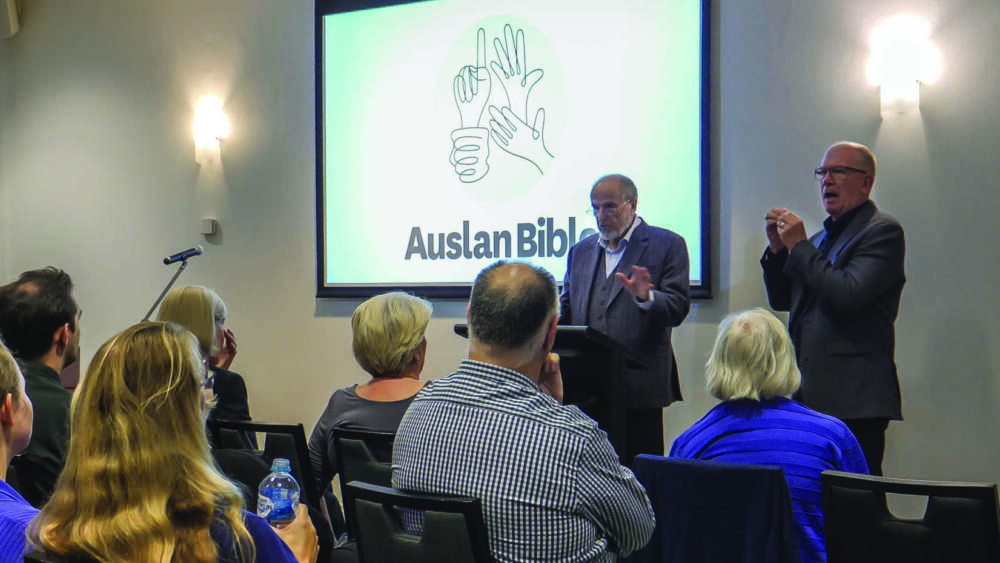When the history of Auslan Bible translations is written one day, 2020 will be marked as a truly significant year. And it’s not because of COVID-19.
Instead, historians will record how a long-serving, experienced translations team planned and prepared to pass the baton of Auslan translations for the Deaf on to a new team. “The old committee had to be folded up, in a sense,” says John Harris, Bible translation consultant with Bible Society Australia. “People have died or we’ve all got very elderly – I just turned 80. Mac’s the same. So there needed to be a new committee.”
“Mac” is the project’s chair, Mac Adams, who was born profoundly deaf and has been involved in the Auslan Bible Project right from the beginning. Harris himself has also been involved since the start, after he was approached in 1996 by Christians in the Deaf community to help them translate the Bible into Auslan.
One of the people who approached him was the late Betty Bonser. Along with her son Peter and his wife Judy, Betty has also played a major role in the project since its beginning. Harris said Peter and Judy – while being hearing people themselves – have “dedicated much of their lives” to helping see this project through.
As a team, they have achieved a huge amount including full translations of biblical books Ruth, Jonah, Luke and John, an abridged version of the books of Genesis, Exodus, Leviticus, Numbers and Deuteronomy, and some of Paul’s letters – plus a few extras, like parts of the Gospels covered in Matthew and Mark which are not in Luke or John.
Along this journey – helped by generous donations by Bible Society Australia supporters like you – the dedicated team innovated and improved the process of translations for the Deaf. Sometimes, the Auslan team were even leading the rest of the world.
Harris refers to a new document of procedures created by the team and notes: “Hidden in that is [a procedure for] the using of the final video draft as the auto cue.” This, he explains, is the result of an idea from the Deaf translation team – to use video drafts during the translation process, rather than written notes. “They found themselves looking at their last video of themselves signing – they just stood there, correcting themselves – and thought ‘Well, why don’t we use that as our prompt all the time?’” Harris says.
Back then, the technology didn’t really exist, so a television was set up beside the camera – still a far cry from someone holding up handwritten notes on butcher’s paper which they had used previously. But nowadays an autocue makes it even easier.
“That was our team who thought of that – and everyone in the world learned from us,” Harris says.
“COVID, in some ways, has enhanced our work.” – John Harris
Now, a new committee of keen people interested in carrying the work forward is rising up. But the older, experienced guard will stay in place for now, with Adams as chair and Harris as consultant – and the future is exciting.
“The new committee is charged with the responsibility of coming up with creative ways to use the material to increase Bible engagement,” Harris explains. “That might be material directed to children, or to young people, or someone else.”
He mentions that an Easter project is planned. And, in the meantime, the existing team will continue to pass on the knowledge they’ve acquired from almost 25 years of AUSLAN translations, familiarising the new crew with techniques, processes and lessons learned.
So far, the transition is going smoothly – even when team meetings were forced onto Zoom by the pandemic. “COVID, in some ways, has enhanced our work,” Harris says. “Because it’s a visual thing, we found that Zoom is a very good way for a Deaf committee to meet.”




